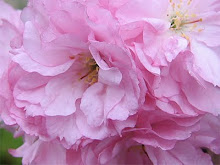Two years ago, I stopped eating sugar.
By sugar, I mean the white stuff — the granulated, overly processed refined sugarcane or sugar beets that's in a white powdery or crystalline form, also known as table sugar — and that's added to all kinds of food products to sweeten them up.
I also mean all the variations of sugar, like "brown sugar," which is basically still white sugar only something has been added to color it brown, and "Sucanat" or "Rapadura/Rapunzel's Whole Cane Sugar" — a type of sweet flour made from dehydrated sugarcane juice, which is much less refined than white granulated sugar keeping all of its minerals, vitamins, and molasses, but is still missing all the fiber from the whole sugarcane.
I stopped eating anything that I thought probably had sugar in it, like muffins at the bakery, or cookies someone else made, or anything at a restaurant that was likely to contain sugar in it, whether it was obvious — such as ketchup or pastries — or not so obvious — such as pancakes or sauces.
Over these past two years, I still went on an occasional sweet-food binge (away from my standard macrobiotic fare) but binging no longer means something with sugar in it. Instead, I binged on something like a croissant (white flour and butter) and a cafe latte. Sometimes I sweetened my food with a drizzle of organic maple syrup, brown rice syrup, or agave nectar. I also experimented with other ways to sweeten my food, such as using various kinds of cooked fruit, sweet winter squashes, and even amazake from the grocery store.
I also stopped eating dry, salty snacks like tortilla corn chips, rice chips, yam chips, potato chips, sesame sticks, etc. so that these overly yang foods couldn't make me crave sugar.
By stopping the sugar and the salty snacks, I've also saved my poor digestive track from becoming dehydrated! I no longer get congested in my nose and sinuses, and I haven't had a single cold or flu bug!
So, what's next?
As I'm writing this and reviewing the kinds of foods that I've snacked on over the last two years, I'm realizing that the next step I want to take is towards achieving my ideal weight and overall health. I want to stop eating snacks between meals and desserts except for on very special occasions. More specifically, these are my favorite snacks that I'm talking about:
• Chewnami Sesame Bars made by Rising Tide Sea Vegetables (These are my favorite snack bars. They contain sesame seeds, kombu seaweed, brown rice syrup, and maple syrup — pretty simple ingredients — and they're delicious!)
• Jocalat organic chocolate bars made by the Larabar company. (These candy bars are comprised of finely ground raw dates and nuts, and organic chocolate that is cooked during the initial processing. Very very yin!)
• Camel Brand Halvah Natural Sesame Bars made by Noble Foods, Inc. (I first bought these two years ago as an alternative to eating sugar. It says on their label "The only natural halvah in North America. Contains no granulated sugar." Nevertheless, it only took eating a couple of these candy bars to see how extremely yin they are too, with their concentrated amounts of ground sesame seeds and malted corn barley syrup!)
• Organic maple syrup and butter on toast (My favorite toast is made with Vital Vittles "Real Bread.")
• Homemade cookies sweetened with organic maple syrup, organic brown rice syrup or Organic Blue Agave nectar.
• Traditional Spice Windmill Cookies by Heaven Scent Natural Foods (These are my favorite store-bought cookies, made of organic whole wheat flour and fruit-juice sweetened. They're delicious!)
• Amazake Rice Shakes (These delicious drinks are made up of cultured organic brown rice, rice koji, and nuts, such as almonds or pecans. Very sweet. Some day I was thinking of trying them out in my ice cream maker!)
Related Blog Articles:
No More Sugar
One Week Since No More Sugar
Whole Date Cookies With No Added Sugar
German Chocolate Cake, A New Upgrade
Julia's Holiday Fudge
"Fatso"
Trying Out New Cookie Recipes
Hummingbirds and Seaweed
The Acid And Alkaline Dimension Of Food, Part 1
The "New" Old New Leaf Market
Monday, December 31, 2012
Wednesday, December 5, 2012
Holiday Pumpkin Carrot Onion Soup for Mom
Dear Mom, I made this soup for you twelve years ago while you were visiting us. Do you remember it? I dedicated it to you because you were my inspiration in creating it. At the time, my intention was to use some of the principles I had been studying in Macrobiotics. And the result was a delicious soup that made it into my box of favorite recipes.
Since then, every time I make the soup, I remember that wonderful visit in November with you. Thanks, Mom! (P.S. I also remember that we shared a couple of apples with the horse down the road that day!)
Now, each time I make the soup it is a little different than the one before. For example, today when I made it I used a whole large apple (instead of apple juice) and part of a Hokkaido pumpkin both from our garden, and a smaller onion, carrots, and garlic from the New Leaf grocery store.
Sometimes, I like to allow the onion to brown a little before I add the carrots, for a rich, carmelized flavor. And so, here is what I have written on my recipe card:
HOLIDAY PUMPKIN CARROT ONION SOUP *during Mom's visit 11/3/2000:
1. Saute in large sauce pan, over medium heat:
1 clove of garlic, minced
1 large onion, grated or minced
3 carrots, grated
1 to 3 teaspoons unrefined sesame oil
2. Continue to cook and add:
1/2 cup cooked mashed pumpkin
1 teaspoon unrefined sea salt
1 teaspoon pumpkin pie spice** (see note below)
dash of cumin
dash of black pepper
3 cups apple juice (or apple sauce) and water
**Note: Ingredients listed in Trader Joe's Non-irradiated, All-Natural "Pumpkin Pie Spice": Cinnamon, Ginger, Lemon Peel, Nutmeg, Cloves, and Cardamom
3. Bring to a boil, then lower heat, and cover. Cook for about 22 minutes longer.
4. Puree in a cuisinart, a blender, or use a hand blender in the pan, and then cook again for a few more minutes. (Add water if needed.)
When I made the soup today, I grated a very large apple from our garden and sauteed it after the onion and the carrots at the beginning. I used a little more pumpkin (about 3/4 cup), and then I used 3 cups of water instead of apple juice. I used only a dash of pumpkin pie spice and a little more of the cumin and pepper. Who knows, maybe next time I'll skip the pumpkin pie spice altogether and use fresh lemon peel from our garden?
Regarding the final step — there's something about pureeing all of the cooked ingredients together that raises the soup up to another, higher level. It makes it more special somehow. And yet, this soup would be equally as delicious, I think, if it were served in its more-chunky state!
Related Blog Articles:
Ohsawa Pumpkin Pie Filling
Since then, every time I make the soup, I remember that wonderful visit in November with you. Thanks, Mom! (P.S. I also remember that we shared a couple of apples with the horse down the road that day!)
Now, each time I make the soup it is a little different than the one before. For example, today when I made it I used a whole large apple (instead of apple juice) and part of a Hokkaido pumpkin both from our garden, and a smaller onion, carrots, and garlic from the New Leaf grocery store.
Sometimes, I like to allow the onion to brown a little before I add the carrots, for a rich, carmelized flavor. And so, here is what I have written on my recipe card:
HOLIDAY PUMPKIN CARROT ONION SOUP *during Mom's visit 11/3/2000:
1. Saute in large sauce pan, over medium heat:
1 clove of garlic, minced
1 large onion, grated or minced
3 carrots, grated
1 to 3 teaspoons unrefined sesame oil
2. Continue to cook and add:
1/2 cup cooked mashed pumpkin
1 teaspoon unrefined sea salt
1 teaspoon pumpkin pie spice** (see note below)
dash of cumin
dash of black pepper
3 cups apple juice (or apple sauce) and water
**Note: Ingredients listed in Trader Joe's Non-irradiated, All-Natural "Pumpkin Pie Spice": Cinnamon, Ginger, Lemon Peel, Nutmeg, Cloves, and Cardamom
3. Bring to a boil, then lower heat, and cover. Cook for about 22 minutes longer.
4. Puree in a cuisinart, a blender, or use a hand blender in the pan, and then cook again for a few more minutes. (Add water if needed.)
When I made the soup today, I grated a very large apple from our garden and sauteed it after the onion and the carrots at the beginning. I used a little more pumpkin (about 3/4 cup), and then I used 3 cups of water instead of apple juice. I used only a dash of pumpkin pie spice and a little more of the cumin and pepper. Who knows, maybe next time I'll skip the pumpkin pie spice altogether and use fresh lemon peel from our garden?
Regarding the final step — there's something about pureeing all of the cooked ingredients together that raises the soup up to another, higher level. It makes it more special somehow. And yet, this soup would be equally as delicious, I think, if it were served in its more-chunky state!
Related Blog Articles:
Ohsawa Pumpkin Pie Filling
Subscribe to:
Comments (Atom)
























































